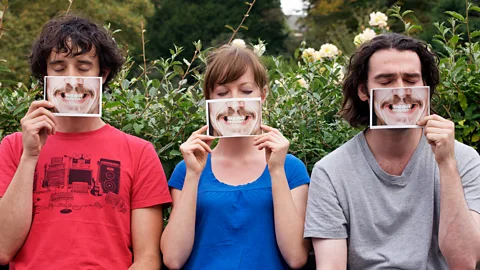How to spot a manipulated image

 Getty Images
Getty ImagesAmid allegations that an official photograph of the Princess of Wales had been "manipulated", here are some clues that can help you identify if an image has been altered or faked.
In a world where pictures can be digitally altered with just a few clicks or even generated entirely from scratch by artificial intelligence (AI), it is becoming ever harder to trust what our eyes see.
The techniques used to manipulate images are so sophisticated that we have entered the era of the hyper-realistic fake. Such images can lead to the spread of misinformation and could even influence public opinion in important events such as elections. With a picture of the Princess of Wales and her children being withdrawn by news agencies amid concerns it had been "manipulated", the issue has been thrown into the spotlight like never before. The Princess of Wales later apologised for making the changes to the image, stating that "like many amateur photographers, I do occasionally experiment with editing". (Learn more about how Kate's photo may have been altered in this analysis from BBC Verify.)
But is there anything we can do to spot an image that might have been altered or AI generated?
Reflections and shadows
Abnormal lighting is often a giveaway that a photograph has been altered. Check the points of light in people's eyes, for example; the source of light will often be reflected in their eyes. If the size and colour don't match with the location, or if they look different between the eyes, then you might have cause to be suspicious. The way subjects and objects appear in reflective surfaces in an image can also provide clues.
Shadows of objects in the image may not line up if it has been pieced together from multiple pictures, although bear in mind that some pictures can be taken with multiple lighting sources. It's worth looking at the way light plays across a subject's face. If the Sun is behind them, for example, their ears might look red.
Artificial intelligence can also produce incongruent lighting and shadows, but as algorithms improve, AI-generated faces are often perceived as being more real than human faces.
Hands and ears
Another tell-tale approach is to look for features that are hard to replicate. AI is currently poor at rendering hands and ears, mangling their shapes, proportions and even the number of fingers. These are the same features that often trouble artists, but as other aspects of AI-generated images of people become hyper-real, these inaccuracies create an uncanny valley that looks unnatural to our eyes.
You might also like:
Look out for unusual or unnatural positioning of limbs or clothing in an image, which can be a sign that a portion of it has been copied or manipulated in some way. But also remember that the flattening of the three dimensional world into a two dimensional image can make things look a little out of place at times too. One test to apply is to look at other elements of the image in the same field of focus and position. Do they look blurry compared to other features nearby in the same depth in the photograph, or are they being ruffled by a breeze in the same way?
Look at the metadata
Hidden within the code of digital images are nuggets of information that can help to pinpoint a fake. Every time a digital camera snaps an image, metadata is written into the image file. Timestamps, for example, led to questions about whether President Donald Trump was in fact at work in the White House the day after revealing he had caught Covid-19 in October 2020.
Image noise
Every digital camera sensor features tiny manufacturing faults that lead to unique errors that leave a kind of "fingerprint" on pictures. This is then associated with a specific camera and can help to identify areas of a photograph that have been manipulated. The grain of an AI-generated image can also look peculiar.
Verification tools
Internet companies such as Google have launched image verification tools that can help people to spot AI-generated images. Facebook and Instagram have started labelling AI-generated images that come from Meta's own systems and is planning to do the same for pictures generated by other companies' AI tools.
--
If you liked this story, sign up for The Essential List newsletter – a handpicked selection of features, videos and can't-miss news delivered to your inbox every Friday.
